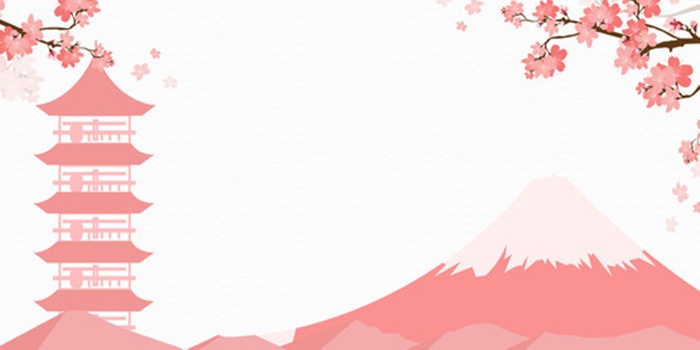
Japan is a country renowned for its deep appreciation of nature and its changing seasons. This profound connection to the natural world is beautifully reflected in the Japanese tradition of "Hanami," the practice of appreciating and celebrating the fleeting beauty of cherry blossoms in spring. However, the Japanese calendar is not limited to sakura (cherry blossoms); it offers a breathtaking kaleidoscope of flowers that bloom throughout the year. In this blog, we will take you on a journey through the changing seasons in Japan and explore the stunning Japanese flowers that grace each month.
January: Plum Blossoms (Ume)
The year begins with the delicate beauty of plum blossoms, or "ume" in Japanese. Ume blossoms bloom in shades of pink, white, and red, casting a fragrant and colorful spell across the landscape. These flowers symbolize endurance and hope, making them a fitting choice for the start of the year. People often visit shrines and temples to enjoy plum blossoms during this month.
February: Japanese Apricot (Kobushi Magnolia)
February brings the Japanese apricot, also known as "kobushi." These small, pale pink or white blossoms resemble cherry blossoms but bloom earlier. They are a symbol of purity and modesty. Like plum blossoms, the Japanese apricot holds cultural significance, with numerous festivals celebrating their arrival.
March: Cherry Blossoms (Sakura)
March marks the eagerly awaited cherry blossom season, or "sakura." These iconic flowers symbolize the transient nature of life and are celebrated with Hanami parties under the blooming trees. The entire country becomes a sea of pink and white, and the cherry blossom forecast becomes a national obsession. Cherry blossoms are not only a visual delight but also a reminder of the impermanence of beauty.
April: Wisteria (Fuji)
As cherry blossoms fade, wisteria takes the spotlight in April. "Fuji" in Japanese, these drooping, cascading blooms come in various shades of purple, blue, pink, and white. Wisteria tunnels and gardens become enchanting places for visitors. Wisteria symbolizes love, youth, and beauty.
May: Iris (Shobu)
May brings the elegant and vibrant irises, known as "shobu." These striking flowers come in various colors, and their shape is reminiscent of Japanese fans. Irises represent valor, and they are often used to commemorate Children's Day on May 5th.
June: Hydrangea (Ajisai)
June sees the arrival of the beautiful hydrangeas, or "ajisai." These lush, globe-like clusters of blossoms come in shades of blue, purple, pink, and white. Hydrangeas are associated with the rainy season in Japan and symbolize gratitude and understanding.
July: Water Lilies (Suiren)
July is the season of water lilies, or "suiren." These serene, aquatic flowers float gracefully on ponds and are often seen in Japanese gardens. They symbolize purity and enlightenment, adding a sense of tranquility to the hot summer months.
August: Morning Glory (Asagao)
August brings the vibrant hues of morning glories, or "asagao." These funnel-shaped flowers come in various colors and are often associated with summertime festivals and events. They symbolize affection, love, and perseverance.
September: Kiku (Chrysanthemum)
Chrysanthemums, or "kiku," take center stage in September. These flowers are deeply revered in Japan and are the imperial emblem. They symbolize longevity, rejuvenation, and enduring friendships. September 9th, known as Chrysanthemum Day, celebrates the beauty of these blooms.
October: Cosmos (Kosumosu)
October is adorned with the delicate and dainty petals of cosmos flowers, or "kosumosu." These colorful, star-like blossoms symbolize order, harmony, and beauty. Fields of cosmos are a popular sight during this month.
November: Maple Leaves (Momiji)
The Japanese autumn is characterized by the breathtaking display of maple leaves, or "momiji." The fiery red, orange, and golden hues of these leaves are a celebrated sight. They symbolize the beauty of the changing seasons and are often enjoyed through "koyo" or autumn leaf-viewing trips.
December: Camellia (Tsubaki)
The year comes full circle with the vibrant camellia blossoms, known as "tsubaki." These evergreen flowers bloom in various colors and symbolize admiration and perfection. Camellias are often used as winter decorations in Japan.
Conclusion
Japan's rich natural beauty is celebrated throughout the year with an ever-changing parade of flowers. From the delicate plum blossoms of January to the fiery maple leaves of November, each month offers a new opportunity to connect with nature and appreciate the significance of seasonal change. The deep cultural and symbolic meanings associated with these flowers add depth and meaning to the Japanese people's profound connection to the natural world. Whether you visit Japan during one of these flower seasons or explore a local garden in your area, taking the time to appreciate the beauty of Japanese flowers by month is a delightful and enriching experience.
flowers, japan, send flowers japan, flower delivery japan, deliver flowers japan, , Anniversary
Celebrating St. Patrick’s Day: Traditions, Flowers, and Cakes
10 Flowers You Can Gift on International Women's Day
Five Valentine’s Traditions from Around the World
Which Gift Is Good For Valentine?
Celebrate Love with Flowersgifting’s Valentine’s Day Flower Delivery
Send Valentine’s Day Flowers Through Flowersgifting: The Ultimate Guide
What Do Red Roses Mean On Valentine's Day?
Valentine’s Day 2024 with Flowersgifting.com - Celebrate Love
The Best Flower Delivery Services in The UK: Why FlowersGifting.com is Your Top Choice
What's The Best Company For Flower Delivery In USA?
Who Is The Best Online Florist In Spain?
What Are The Traditional Flowers for Mother's Day?
Valentine's Day Flowers & Gifts Argentina
How Is Valentine's Day Celebrated In Brazil?
Best Online Flower Delivery in New Zealand
Send Valentine's Day Flowers to Canada Online with Flowersgifting
Send Valentine's Day Flowers to Germany with FlowersGifting